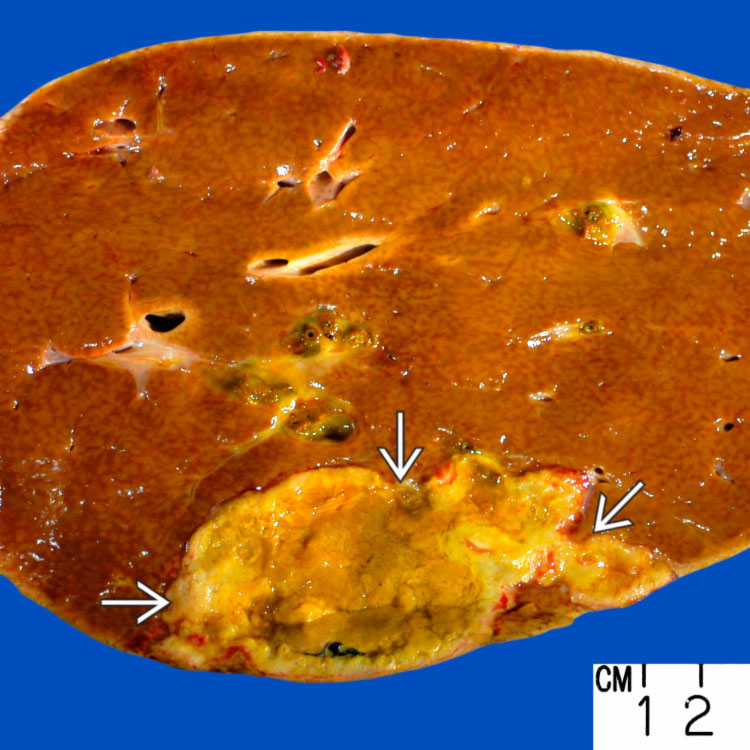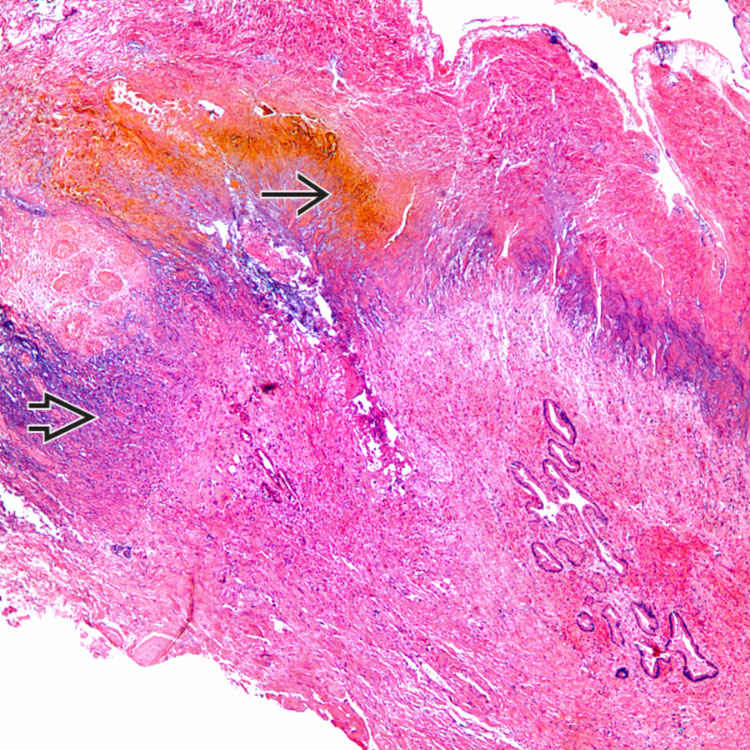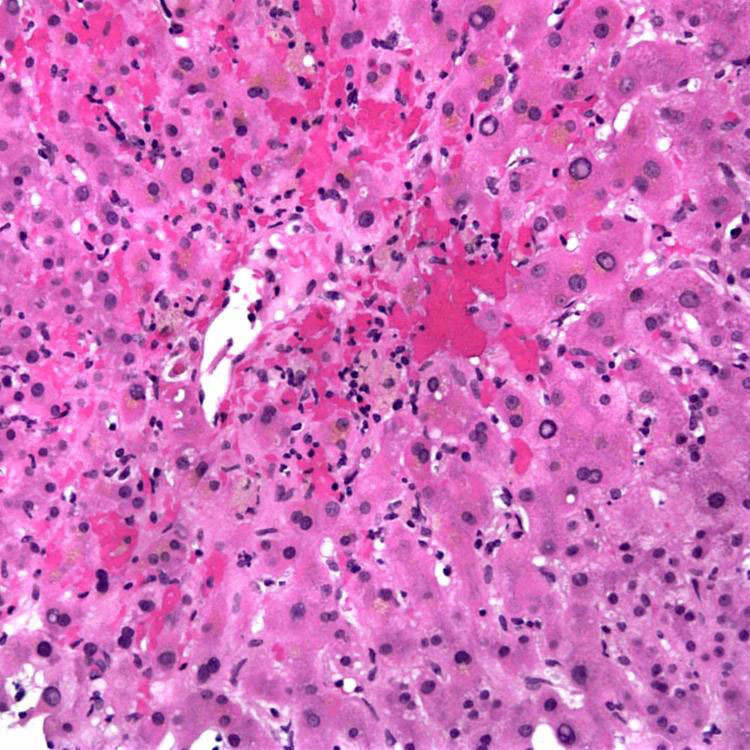Results in bile duct ischemia, hepatic parenchymal infarction
–
Bile ducts depend on arterial flow and therefore suffer ischemic injury
Clinical Issues
•
Relatively well tolerated in native livers

Anastomosing blood supply with good collateralization protects against ischemic injury
•
Transplanted livers much more susceptible, especially early post transplant
•
Symptoms related to acuity and ensuing complications
•
Cholestatic liver function abnormalities are common
Microscopic
•
Zone 3 hemorrhage and hepatocyte dropout in early posttransplant period
•
Ischemic bile duct injury

Denuded, necrotic bile duct epithelium sloughs into lumen, forming eosinophilic bile casts

Bile leakage into periductal connective tissue

In time, chronic ischemia can lead to biliary strictures, fibrosis, and duct loss
•
Hepatic infarction

Necrosis of hepatocytes and portal connective tissue
TERMINOLOGY
Abbreviations
•
Hepatic artery thrombosis (HAT)
Definitions
•
Thrombotic occlusion of hepatic artery &/or its branches
ETIOLOGY/PATHOGENESIS
Causes of Thrombosis

 following hepatic artery thrombosis.
following hepatic artery thrombosis.
 in a patient who developed hepatic artery thrombosis after transplantation.
in a patient who developed hepatic artery thrombosis after transplantation.
 and leakage of bile
and leakage of bile  . The bile duct ischemia occurred secondary to hepatic artery thrombosis.
. The bile duct ischemia occurred secondary to hepatic artery thrombosis.








